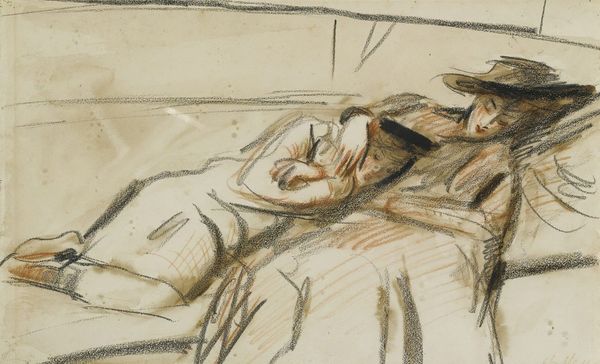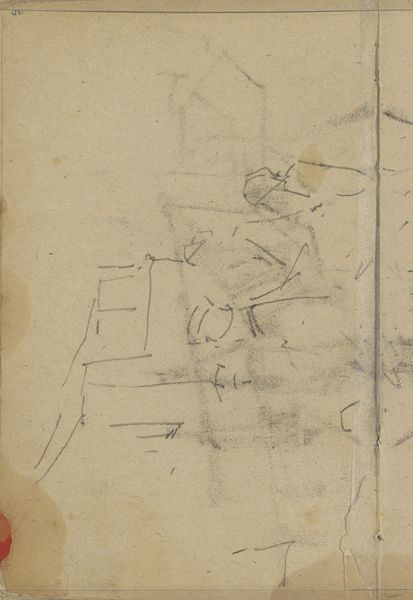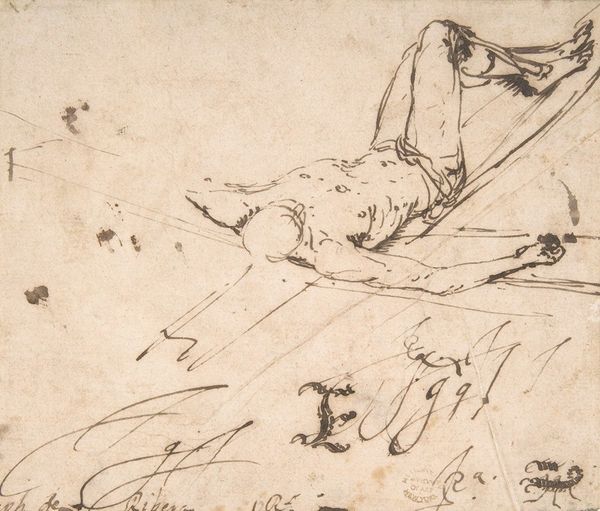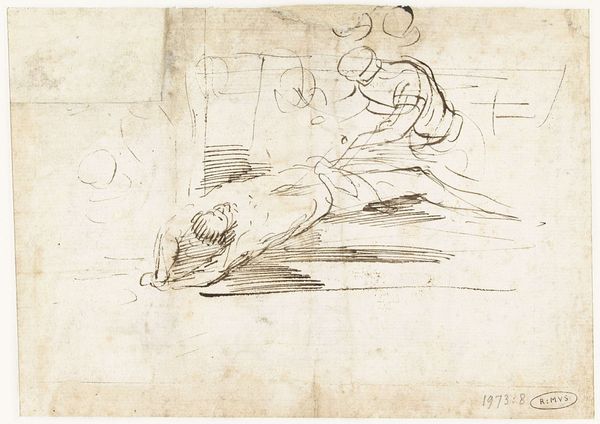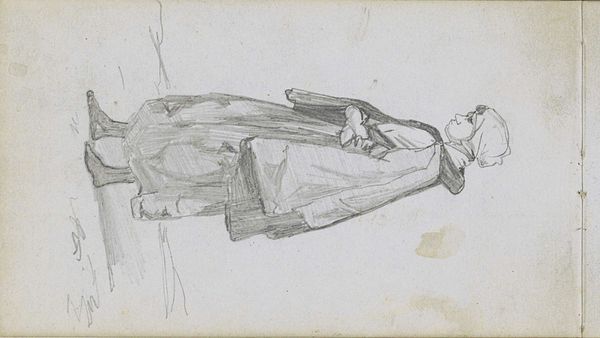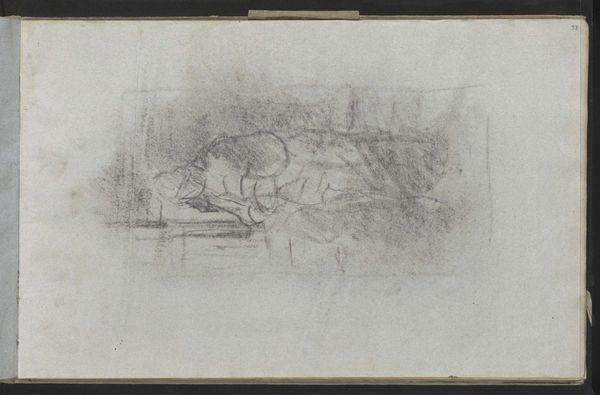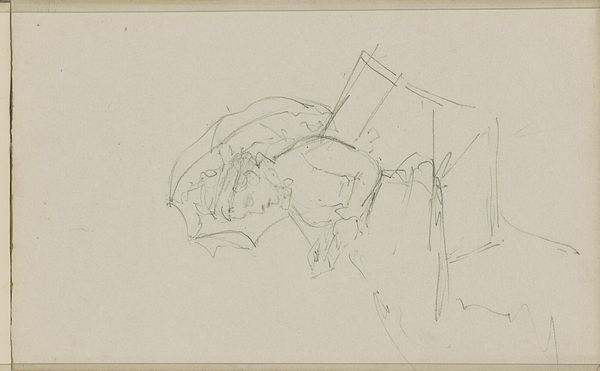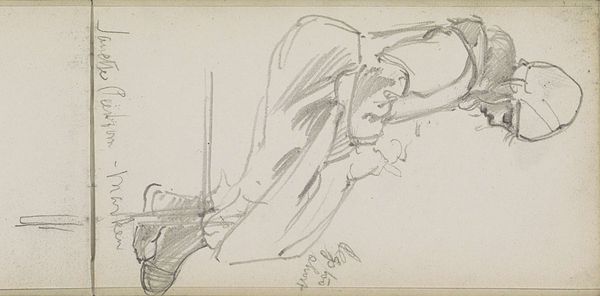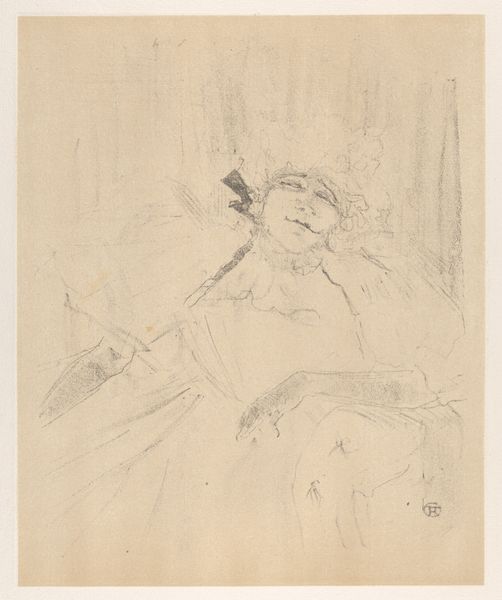
drawing
#
portrait
#
drawing
#
baroque
#
nude
Copyright: Public Domain: Artvee
Editor: We’re looking at "Saskia Lying in Bed," a drawing by Rembrandt van Rijn, circa 1638. It’s rendered in brown ink, and you can see the loose, gestural quality of the lines. It feels very intimate and personal, a private moment captured. What catches your eye when you look at this piece? Curator: The materiality of this work speaks volumes. We see the directness of the ink on paper, seemingly unmediated. Consider the societal pressures around depictions of women at this time. Yet here, we glimpse Saskia, Rembrandt’s wife, in repose. This wasn't created to be hung in a grand hall; its function was something more personal, perhaps a study, a memento, or an act of love. What implications does that have on how we perceive it? Editor: That’s fascinating! It makes me wonder about the accessibility of the materials themselves. Was ink readily available? What kind of paper was used? It adds another layer to thinking about who could create art and under what circumstances. Curator: Precisely. The ready availability of these materials shifts our understanding of artistic production. Rembrandt wasn't just some genius touched by God. He had access to material, labor, and a space to create. Think about how the economic landscape shaped not just what he could create, but also what we could later see and interpret. Are we, by focusing on individual genius, obscuring these very real production processes? Editor: That’s a very important point. I had not considered the role of material availability and its relationship to art-making until now. Thank you. Curator: It forces us to rethink what constitutes "high" art and the often obscured role of material conditions. Always consider the processes.
Comments
No comments
Be the first to comment and join the conversation on the ultimate creative platform.

